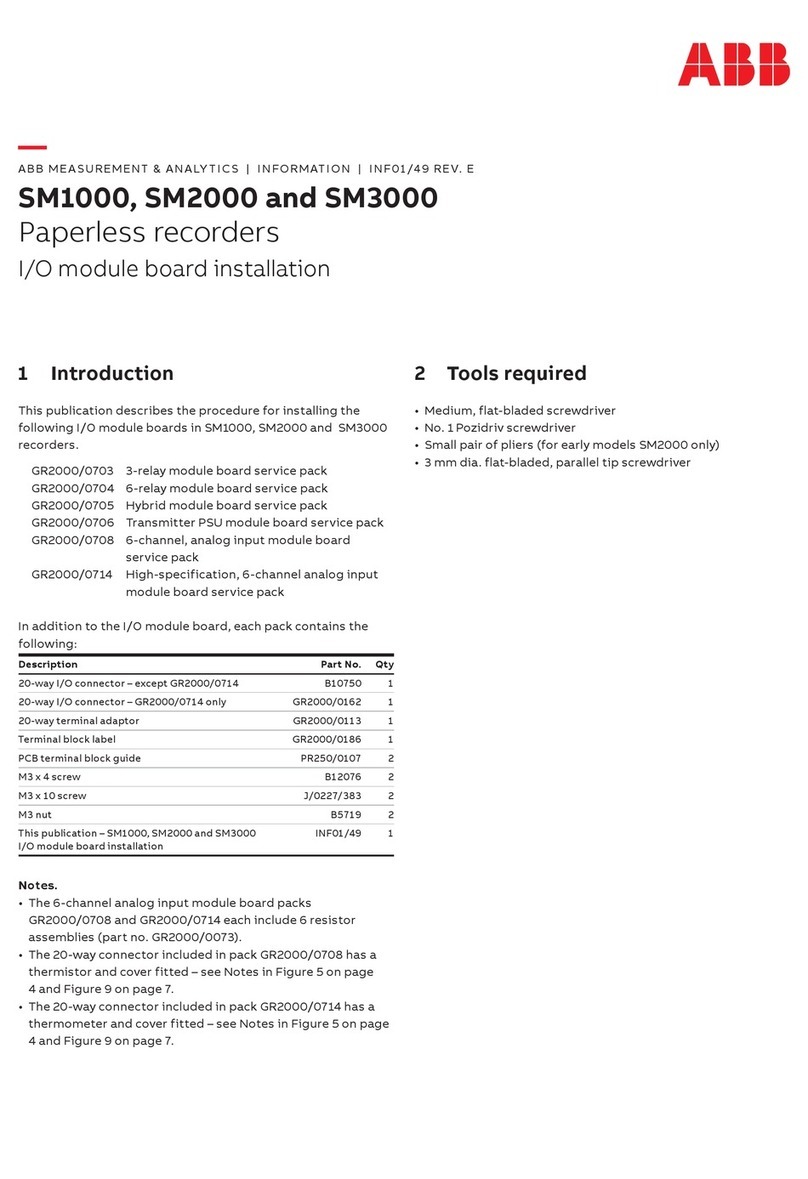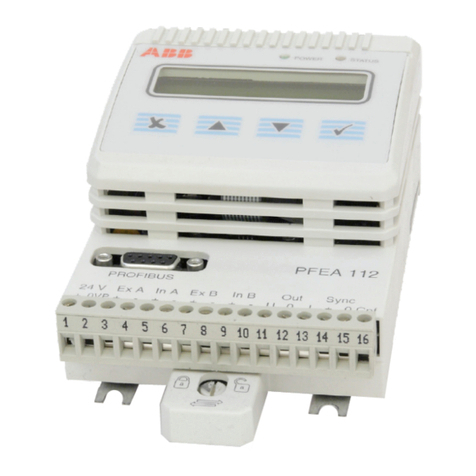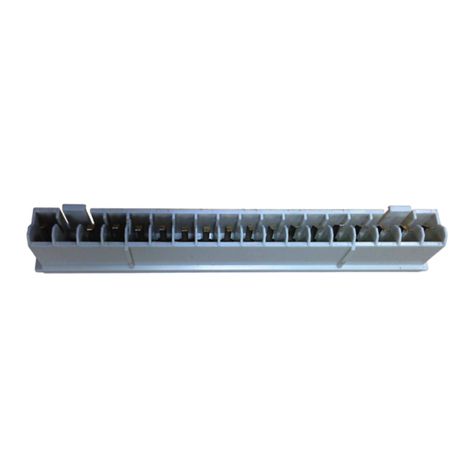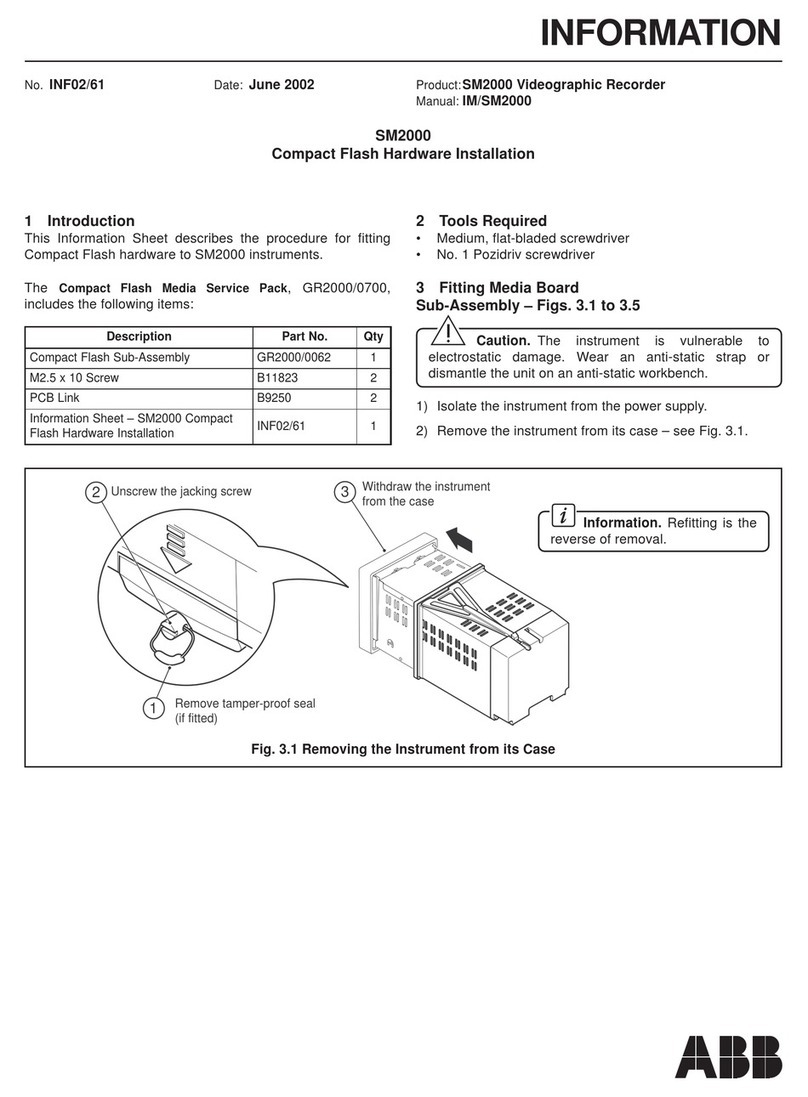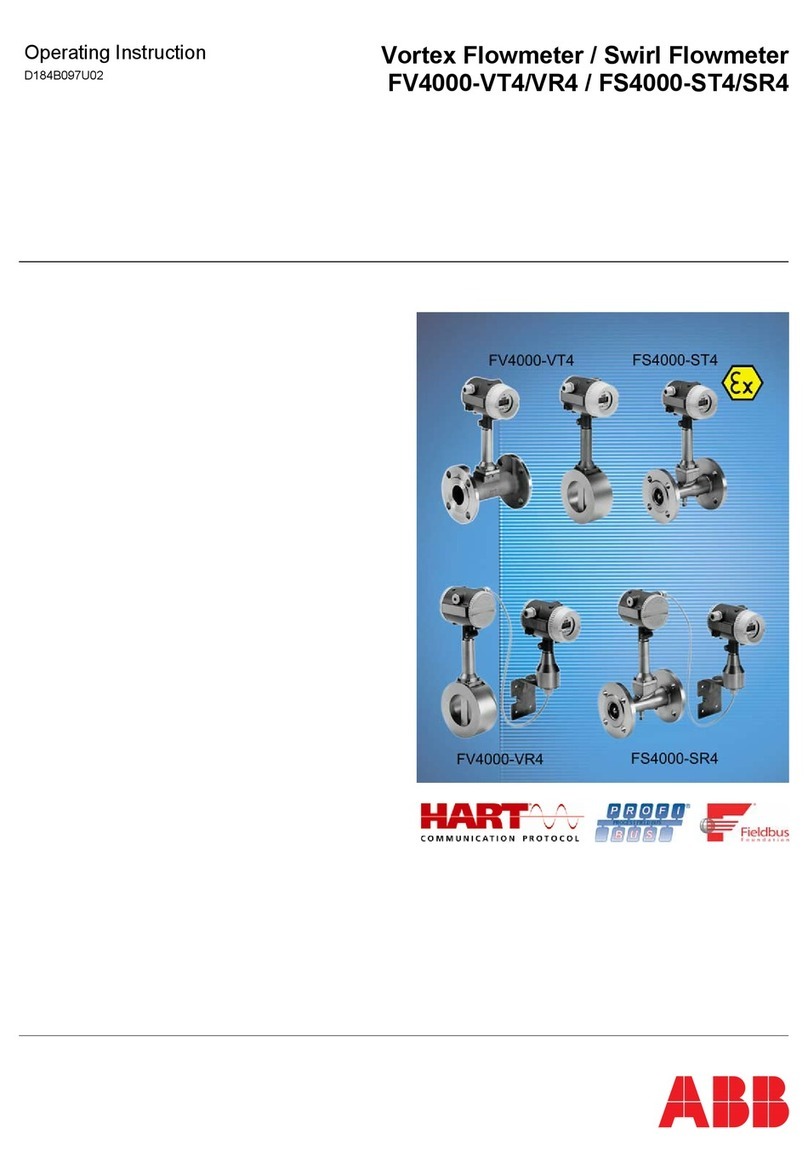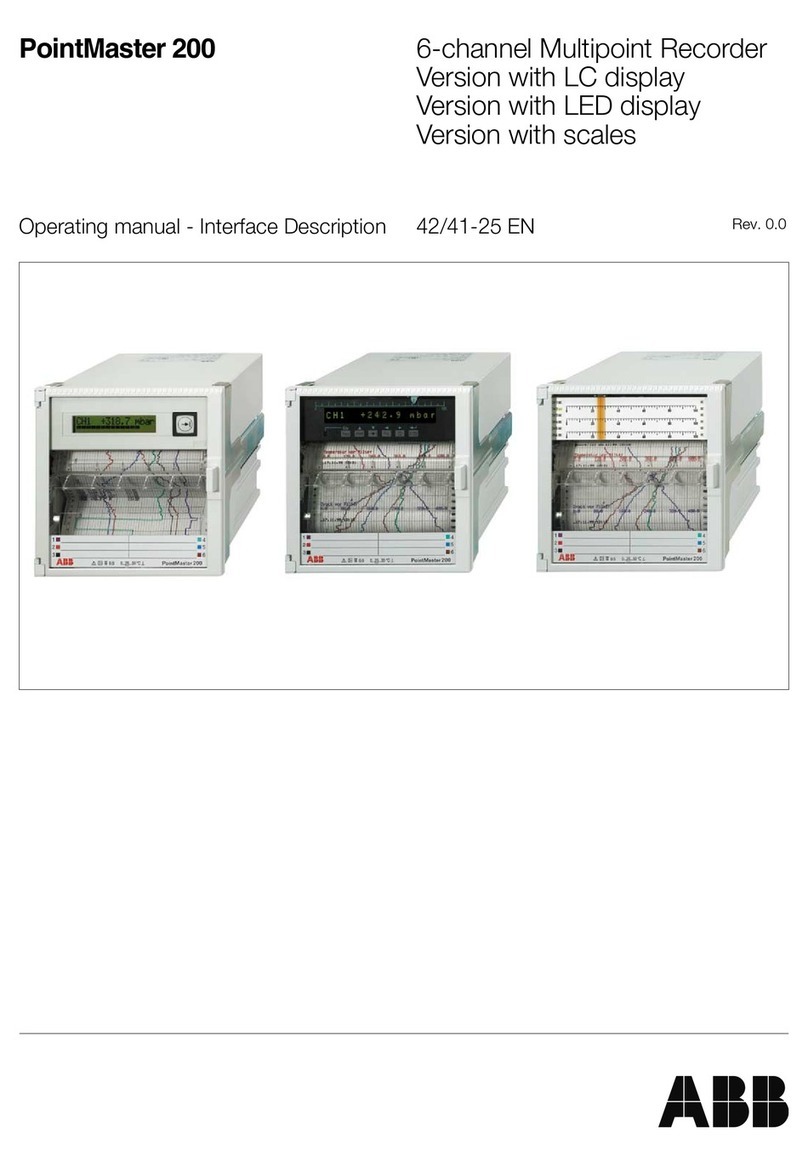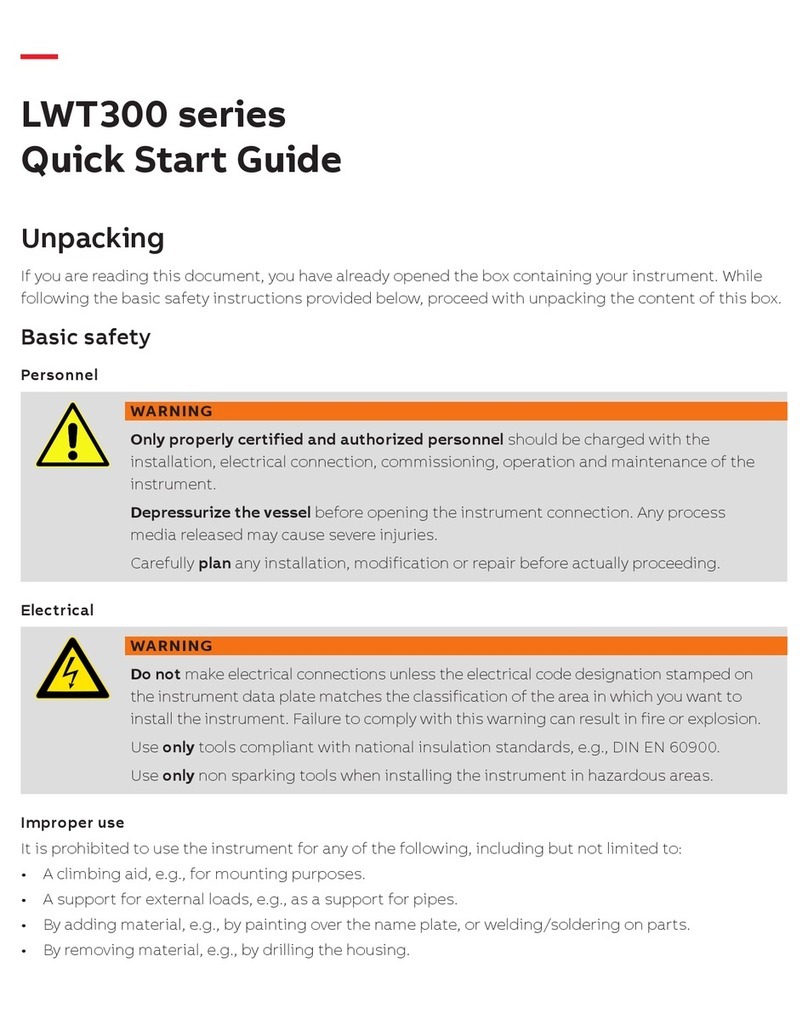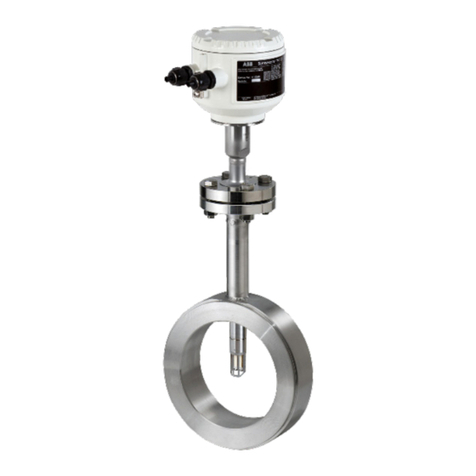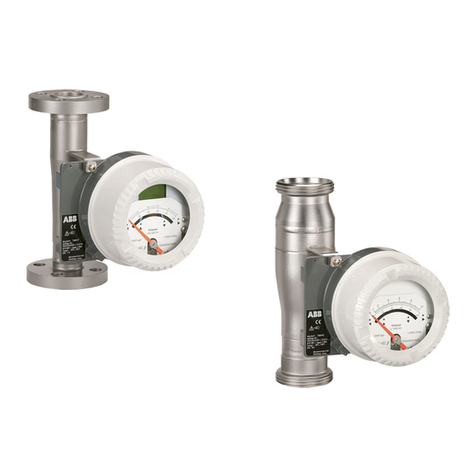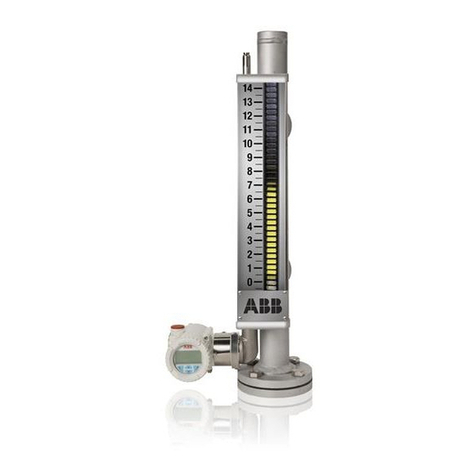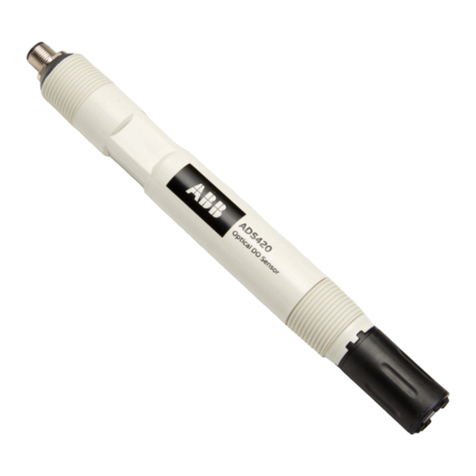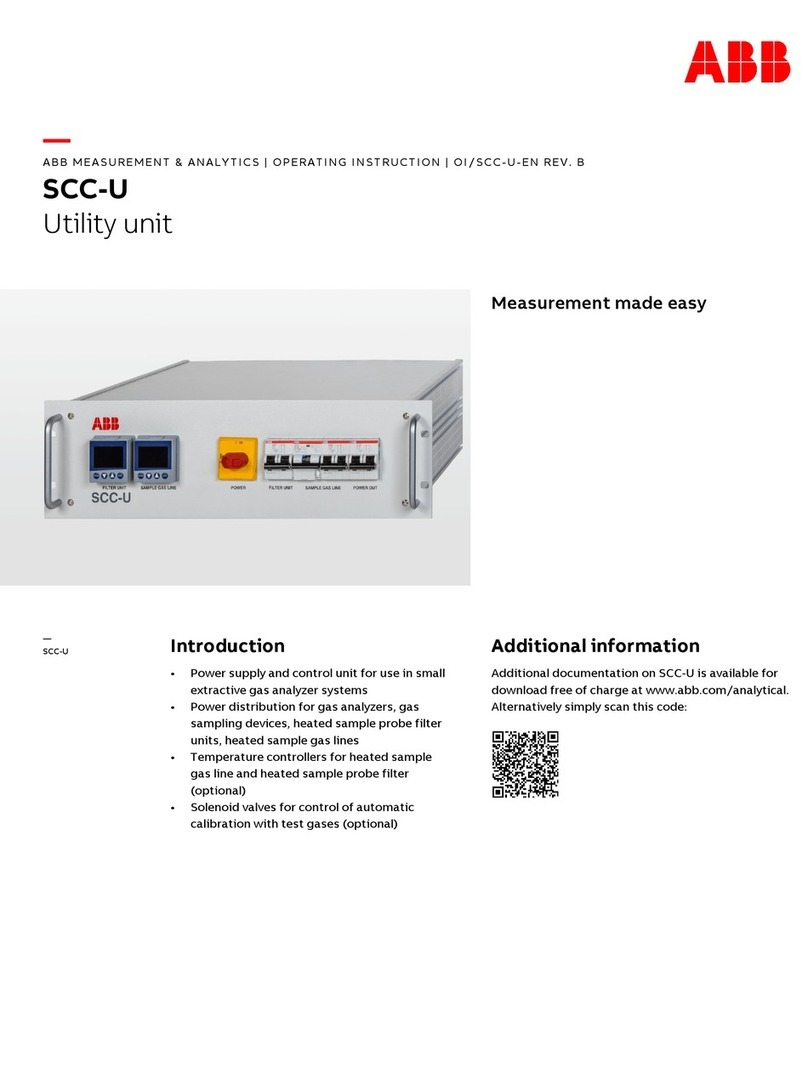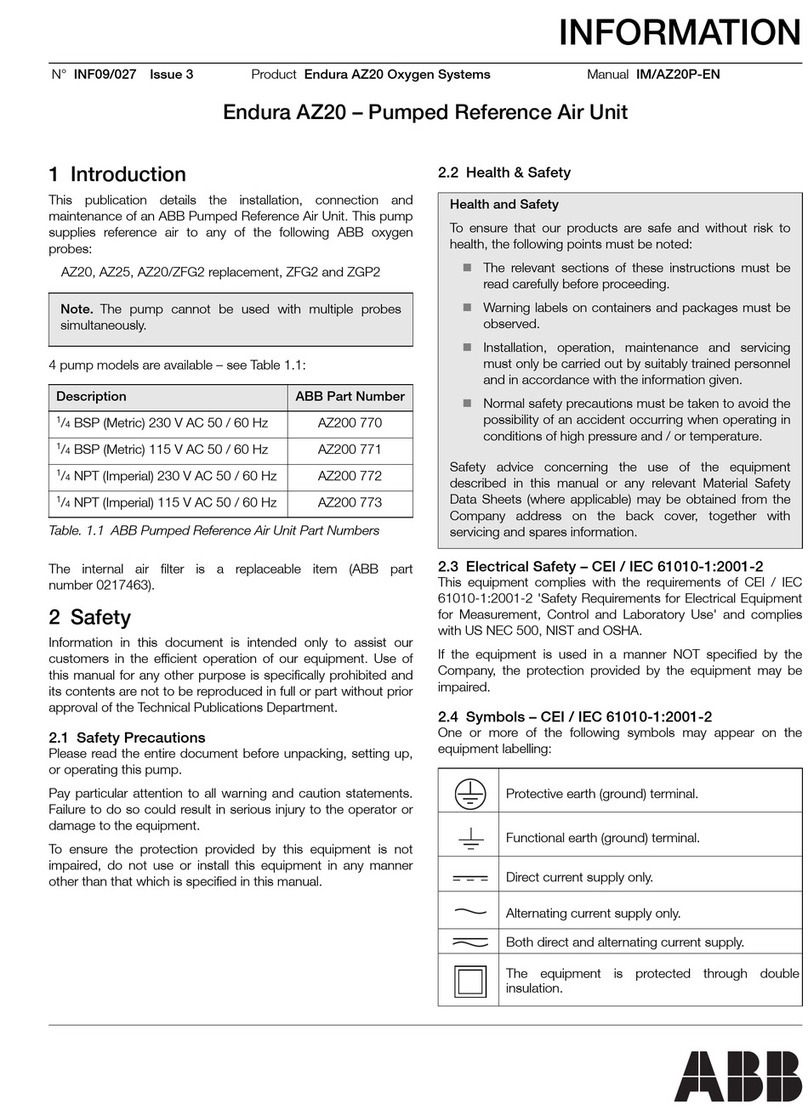
3
1 General
1.1 Introduction
This MT5000 series is comprised of the MT5000, MT5100 and
MT5200 models. This manual provides an overview of the safety
aspects that must be observed for the installation and operation of
the device.
1.2 Product description
The MT-series of level transmitters is a modular range of field
mounted, microprocessor-based electronic transmitters, utilizing
guided wave radar technology. Accurate and reliable measurement
of liquid, solids and slurry level is provided in even the most difficult
and hazardous industrial environments. The MT-series can be con-
figured to provide specific industrial output signals, according to
4–20 mA with HART digital communication as well as FOUNDATION
Fieldbus protocol. The MT-series consists ofthree models: MT5000
(total level measurement), MT5100(total level and interface measure-
ment) and MT5200 (total level measurement with ULD mode for low
dielectric applications).
1.3 General safety information
The device is constructed in accordance with international and local
regulations and is deemed to be operationally safe. Additionally, the
device is tested and shipped from the factory in perfect working
condition. The information contained within this safety manual, as
well as all applicable documentation and certification, must be ob-
served and adhered to in order to maintain the factory-deployed
condition throughout the MT-series period of operation.
Full compliance with the general safety requirements must be ob-
served during handling, installation, maintenance or operation of the
device. In addition to providing general information, the individual
sections within this manual contain descriptions, processes and/or
procedural instructions with specific safety information for that
corresponding action.
Only by observing all of the safety information can the user minimize
the risk of hazards to personnel and/or the environment. The provid-
ed instructions are intended as an overview only and do not contain
detailed information on all available models or every conceivable
scenario that may arise during setup, operation and/or maintenance
work. This document shall be used in conjunction with the opera-
tion/instructions manuals.
For additional information, or in the event of specific issues not cov-
ered within these operating instructions, please contact the manu-
facturer. ABB declares the contents of this manual are not part of
any prior or existing agreements, commitments or legal relation-
ships and are not intended to amend those that are already in place.
In addition, the user must observe all relevant safety regulations
regarding the installation and operation of electrical systems and
the relevant standards, regulations and guidelines concerning explo-
sion protection.
1.4 Information on WEEE Directive 2002/96/EC (Waste Electrical
and Electronic Equipment)
This product/solution is not subject to the WEEE Directive 2002/96/
EC or corresponding national laws (e.g., the ElektroG-Electrical and
Electronic Equipment Act-Germany). Dispose of the product/
solution at a specialized recycling facility. Municipal garbage collec-
tion points should not be used for this purpose.
According to WEEE Directive 2002/96/EC, only products that are
used in private applications may be disposed of at municipal
garbage facilities. Proper disposal prevents negative effects on
both individuals and the environment and also supports the re-
use of valuable raw materials. ABB can accept and dispose of
returns for a fee.
1.5 Pressure Equipment Directive (PED) (97/23/CE)
This product conforms to the EC directives listed in the device-
specific EC declaration of conformity. It is designed in accord-
ance with safe engineering practices to meet state of the art
safety requirements, has been tested and left the factory in a
condition in which they are safe to operate.
1.6 Use of instruction
2 Installation in Hazardous Locations
2.1 Explosives atmospheres installation
For installation requirements in Explosives Atmospheres applica-
tions refer to IEC 60079-14 and any local Safety or Electric Code
regulations mandatory in your area.
For specific conditions for safe use refer to section 3.0 of this
manual.
WARNING - Bodily injury. The device can be operated
at high levels of pressure and with aggressive media.
As a result, serious injury or significant property
damage may occur if this device is operated incor-
rectly.
DANGER - Serious damage to health / risk to life
This symbol in conjunction with the signal word
“DANGER” indicates an imminent electrical hazard.
Failure to observe this safety information will re-
sult in death or severe injury.
WARNING - Bodily injury This symbol in conjunc-
tion with the signal word “WARNING” indicates a
potentially dangerous situation. Failure to observe
this safety information may result in death or se-
vere injury.
CAUTION - Minor Injuries This symbol in conjunc-
tion with the signal word “CAUTION” indicates a
potentially dangerous situation. Failure to observe
this safety information may result in minor or
moderate injury. This symbol may also be used for
property damage warnings.
NOTICE - Property Damage This symbol indicates
a potentially damaging situation. Failure to ob-
serve this safety information may result in damage
to or destruction of the product and / or other
system components.
IMPORTANT (NOTE) This symbol indicates opera-
tor tips, useful information or important infor-
mation about the product or its further uses. The
signal word “IMPORTANT (NOTE)” does not indi-
cate a dangerous or harmful situation.
